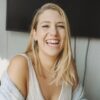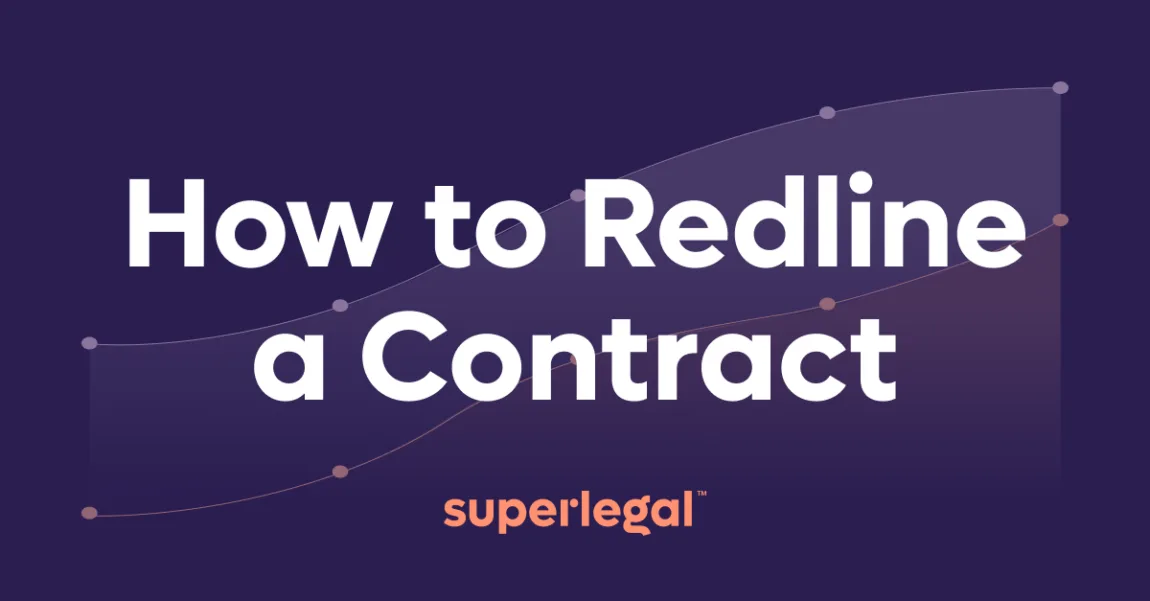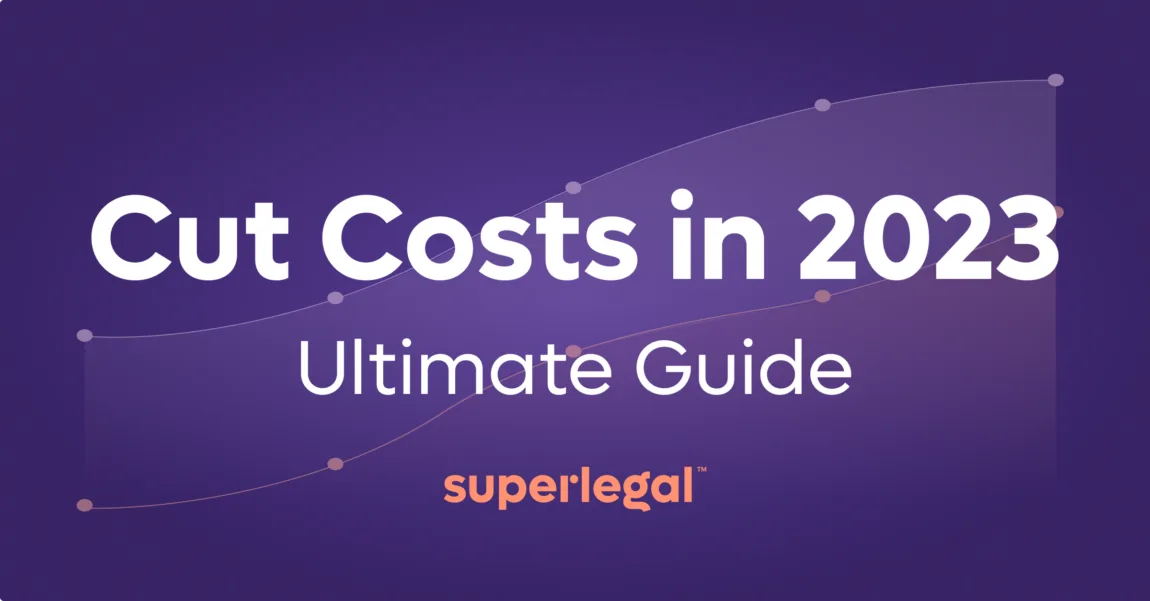OEM agreements are becoming more demanding and more complex than ever before.

How are you supposed to understand, review and sign your OEM agreement in a way that covers your business needs and manages your legal risk?
Well have no fear, Superlegal is here.
We know these contracts can be overwhelming – so we’re here to give you some seriously helpful tools!
We’re experts in OEM agreements, product supply agreements and related manufacturing contracts.
Our AI has analyzed hundreds of thousands of them – so we know the market standard inside out!
This blog is packed FULL of Pro Tips so you can negotiate your OEM agreements like a pro, in 10 simple steps!
In this article we’re going to cover:
- What is an OEM agreement
- What is the purpose of an OEM agreement
- What is the difference between an OEM agreement and a Product Supply Agreement
- A quick word before you start negotiating
- 10 steps to negotiate your OEM agreements like a pro!
These insights are seriously handy when an OEM turns up on your desk for another night of moonlighting as a lawyer. But if you’re looking for the full works – you can find entire policies on the Superlegal platform (more on that later!)
In the meantime – let’s get into our 10 steps to negotiate your OEM agreements like a pro!
What is an OEM Agreement
Under an OEM contract, you supply your buyer with components that are incorporated into their finished product and sold under its own brand name.
Your OEM agreement will outline the terms and conditions of the business relationship and clearly outline the expectations, responsibilities and obligations of each party – so that you can establish a mutually beneficial, long lasting and prosperous business relationship!

What is the purpose of an OEM Agreement
A well-drafted OEM agreement will:
- Align the parties: Now this one’s a big one. By ensuring that both parties are on the same page when it comes to products, quantity, quality, and pricing, the manufacturing and supply agreement works to prevent any misunderstandings between you and your buyer that could arise during the relationship.
- Establish Clearly Defined Quality Standards: By allowing your buyer to leverage your manufacturing capabilities and expertise to produce high-quality products that meet its specific needs, you will benefit from a long-term relationship and a stable source of revenue. Remember, happy customers equals more business.
- Protect Intellectual Property: By protecting your intellectual property and limiting your buyer’s rights to ‘work for hire’ only to the extent necessary to incorporate your work in the buyer’s products, you can rest assured that your IP remains intact and that both parties are clear on whose property is whose.
- Prevent Legal Disputes: A well drafted OEM agreement will significantly minimize the risk of legal disputes by clearly outlining the responsibilities and obligations of both parties, including the procedures for resolving any disputes that may arise.
What is the difference between an OEM Agreement and a Product Supply Agreement
OEM agreements and product supply agreements (PSAs) are both commercial contracts used in the manufacturing industry, but they serve slightly different purposes.
Both OEM agreements and PSAs are used when a buyer has specific product requirements and the manufacturer is responsible for manufacturing and supplying those products. However OEM agreements specifically relate to components of products or products that are incorporated into the buyer’s finished product.
So the key difference between a PSA and an OEM agreement is that a PSA governs the supply of finished products to a buyer, while an OEM agreement governs the supply of components or products that are incorporated into a buyer’s finished product.
A quick word before you start negotiating!
Before sitting down to negotiate, both parties should determine precisely the goals of the business relationship.
Clarify the terms and conditions of the relationship before turning them into a written agreement, so that the manufacturing and supply agreement captures the intentions of the parties clearly and accurately.
It’s important to understand the difference between the legal considerations involved in negotiating supply agreements, and commercial ones like production, delivery, supplier dependency and lead time.
The legal terms in your OEM agreements must reflect the realities, processes, operations and needs of your business.
Do NOT assume that certain expectations or terms are agreed to if they are not expressly stated within the confines of the document!

The Ultimate 10 Steps to Negotiate your OEM Agreements like a Pro
We’ve arrived at Superlegal’s ultimate 10 Steps to negotiate your OEM agreements like a pro.
1. Term, termination and automatic renewal
An OEM agreement’s termination and renewal terms are absolutely critical – you need to understand the conditions in which your buyer can terminate the agreement.
If you are happy with the commercial terms of the agreement, make sure to include an Automatic Renewal clause so that you don’t need to renegotiate terms.
Automatic Renewal simply allows the agreement to automatically renew at the end of the term. This means that all you’ll need to do is add Statements of Work (SOWs) and Purchase Orders (POs) for new products or projects, all to operate under the same framework agreement.
Pro Tip: Stipulate an automatic renewal of one year, unless either party opts out in writing. Allow for the parties to agree on a price for the renewal term, or for the price to be adjusted upwards in an amount of up to 5%.
Termination relates to the parties’ right to end the agreement and a statement of what will happen if they do (including the amount of notice a party must give the other side of their intent to terminate.)
Pro Tip: make sure that existing SOWs and POs continue to be in effect after termination – and make sure that your buyer’s obligation to pay fees under the manufacturing supply agreement survives the termination.
2. Pricing and payment terms
There’s two key considerations when it comes to pricing:
- Understanding exactly what goes into your pocket (after taxes).
- Avoiding vague terms so that you don’t have to face uncomfortable conversations with your buyer down the line when it comes to payment terms, timelines for disputing invoices or interest on late payments.
The buyer typically won’t be charged for insurance or for the supplier’s storing of the products. So you will have to either pay these costs or include them as part of the overall price of your products.
Pro Tip: Everything that’s under your control should be included in your prices, and taxes should be specifically stated as excluded and the sole responsibility of the buyer.
The payment term specifies how many days after receipt of your invoice the buyer has to pay the amounts owed.
Pro Tip: Clearly set out that invoices are to be paid within 30 days, and that if they are not challenged within this timeframe they are considered accepted. Interest on overdue invoices at 1.5% per month is today’s market standard.
3. Warranties
A warranty is simply a promise you make about how well your product works.
As the manufacturer of the products, you’re obligated to promise that the products aren’t defective. If the products are discovered to have defects within a certain period of time after their shipment, the supplier typically promises to repair or replace them.
Pro Tip: Warrant the date of delivery and conformance of the goods to the specifications agreed to in writing – a warranty of one year is standard in the market. Make clear that no additional representations or warranties are provided outside of those explicitly agreed to in the written agreement.
Warranty disclaimers can be life savers!

4. Indemnity
Indemnification is a promise from either your or the buyer to protect the other’s financial interests in case of a third party claim, arising from the other’s harmful conduct.
The indemnity allocates responsibility between the parties if problems arise in the future – protecting each side from the financial consequence of the other’s harmful conduct on outside parties.
Typical scenarios include protecting the buyer from the supplier’s negligence in creating the products, or false claims of ownership in them. In turn, you are protected if your buyer doesn’t meet its obligations under the agreement and a third party lawsuit is headed your way.
Pro Tip: Make sure that the agreement obligates the buyer to indemnify third parties for damages resulting from any negligence or misconduct on their part, and limit your indemnity to property damage, injury and death resulting exclusively from gross negligence or wilful misconduct.
5. Limitation of Liability
The thing with liability is, if you don’t set strict limits at the outset – costs can quickly escalate should things go wrong further down the line!
There are two limitations of liability that you’ll commonly see in supply agreements:
- Special (indirect) damages liability limitation
- Aggregate liability cap
Special damages
Special damages are simply ‘indirect’ losses incurred by the buyer that could not have been ‘foreseen’ by you at the time of the event. These losses can include loss of profits, loss of opportunity and loss of reputation.
It’s not reasonable to expect you to be liable for these kinds of losses, as they can be a long way downstream, with very little visibility or foresight on your part.
Pro tip: Make sure you exclude liability for special damages as they can quickly add up.
Aggregate liability cap
It is standard for manufacturers to require some sort of cap on the liability they will incur if something goes wrong.
Pro tip: The market trend is to tie this aggregate liability cap to the fees that your buyer pays over a period of time – such as 12 months of fees for your products.
It’s vital for the ongoing solvency of your business that these two key areas of liability are sufficiently restricted.
6. Quality Standards, Inspection and Acceptance
Your supply agreement should include a clear description of the quality standards that the products must meet and the procedures for inspection, testing and acceptance of the goods.
These ensure that both you and your buyer have clear expectations to ensure product quality and safety. This can help to minimize the risk of disputes and ensure a successful and long-lasting business relationship.

When it comes to OEM agreements, standards will be high and they will be precise to ensure that the finished product meets the buyer’s specifications. For example, the agreement may permit your buyer to conduct regular testing or inspections to ensure that the product meets specific performance or safety standards.
So make sure that those standards are clearly articulated and incorporated into the agreement, and that you only agree to standards you are able and willing to meet.
The specific standards relevant to your product will depend on a variety of factors. Some standards such as ISO 9001 for quality management systems, are relevant to a wide range of industries.
Standards can be region-specific, product specific or more likely, a prerequisite for your buyer doing business with you.
‘Inspection’ clauses give the buyer the opportunity to look at your products to determine whether they meet the standards set out in the agreement, before they are deemed ‘accepted.’
You’ll want to set a clear deadline for acceptance.
Pro Tip: The market standard is to limit the timeframe for your buyer’s right to inspect your products to 14 days.
7. Transfer of title and risk
Clearly set out the time, date and shipment address at which you will deliver the products to your buyer.
Until the products get to the point of ‘delivery’, you will be responsible for any damage to, loss of, or delay in providing the products.
Once the products are ‘delivered’ in accordance with the criteria set out in the agreement, this responsibility is transferred to the buyer.
Many supply agreements do not allow the title of ‘owner’ to pass to the buyer until the buyer pays for the goods.
Do not make this mistake!
Under this type of clause, the buyer obtains possession of the goods upon delivery, but you still hold title and therefore risk of loss.
Now this is extremely important: make sure that both title and risk of loss will transfer to your buyer upon delivery.
And make sure you clearly set out what ‘delivery’ means. Should the buyer collect the products from your location? Or will you be expected to ship the products to your buyer? How much will that cost? Have you incorporated those costs into your prices?
You can use INCO terms (see below) to make sure that all the specifics of delivery are clearly stated and understood.
Pro Tip: If delivery fails by fault of the buyer, your contract must set out that the goods will be deemed delivered and the risk of loss will pass to the buyer, irrespective of the failed delivery.
In these cases, you may consider setting out in the agreement that you can store the goods at the buyer’s expense.
Part of the supply and delivery of the product under an OEM agreement may require you to provide technical support, training, and other services to your buyer to ensure the products are integrated and functioning properly.
Again, make sure you are willing and able to provide any such support that you agree to.
8. Delivery – INCO Terms
The use of Incoterms in an OEM agreement is fundamental – because it helps to clarify the responsibilities and risks associated with the delivery of goods from the seller to the buyer.
The Incoterms specify who is responsible for the cost of transportation, insurance, loading and unloading of the goods and customs clearance.
Some common Incoterms used in manufacturing product supply agreements include:
EXW (Ex Works): The seller makes the goods available at its premises, and the buyer is responsible for all transportation costs and risks.
FOB (Free on Board): The seller is responsible for loading the goods onto the shipping vessel at the port of shipment, and the buyer is responsible for all transportation costs and risks from that point forward.
CIF (Cost, Insurance and Freight): The seller is responsible for the cost of transportation and insurance to the port of destination, and the buyer is responsible for all transportation costs and risks from that point forward.
DDP (Delivered Duty Paid): The seller is responsible for all costs and risks associated with delivering the goods to the buyer’s premises, including customs clearance and duties.
The specific Incoterms that are used in a manufacturing supply agreement will depend on the nature of the goods you manufacture, and the location of you and your buyer.
It is critical for both parties to understand and agree on the Incoterms before entering into the agreement to avoid any misunderstandings or disputes later on.

9. Force Majeure
A “force majeure” clause excuses both parties from fulfilling an obligation under the contract if an unusual event prevents them from being able to carry it out to the extent required.
Parties can list off events like fires, war and strikes – but in light of COVID-19 it’s clear that not every event prohibiting the supply of products can be foreseen!
Manufacturers faced extremely unique challenges in keeping their contractual obligations during the pandemic – so you’ll need to pay attention to these clauses!
Pro Tip: Clearly label any list of force majeure events as non-exhaustive, and use a catch-all term to include all other unforeseeable circumstances preventing performance to make sure that you’re not on the hook for things outside of your control.
10. Intellectual property
Intellectual property (IP) is a crucial component of a product supply agreement – as you’ll need to ensure that the parties’ respective IP rights are protected and that each party has the necessary licenses to use the other party’s IP.
One of the biggest IP concerns for a manufacturer in an OEM agreement is the ‘Work for hire’ clause.
Under a work-for-hire arrangement, the buyer typically owns all rights to the work created by the manufacturer. This means that the manufacturer gives up any ownership or intellectual property rights in the work and agrees that the buyer can use the work as it sees fit – without any further payment or compensation to the contractor.
Pro Tip: Make sure that all works created by you under the agreement and are accordingly considered ‘work for hire’ are to be the exclusive property of the buyer “only to the extent necessary to incorporate your work into the buyer’s products.”
If you have something proprietary – you want to make sure that remains yours. So specify that you retain ownership of intellectual property rights to all works that fall outside the scope of the ‘work for hire’ provision.
Why Superlegal?
At Superlegal, we know the manufacturing industry’s legal needs inside and out, and we are experts in negotiating your agreements!
We work with manufacturing companies from a variety of industries and have quickly become the number one legal partner to the manufacturing industry.
At Superlegal you’ll save up to 90% on your legal costs and get your contracts reviewed and back to you within 24 hours.
“The 24-hour turnaround time is really helpful!”
Click here to read about how we’re helping Adam Stiles, COO of Specialty Silicone Products, take care of his contracts easier, faster and better.
Our combination of award winning AI and leading commercial lawyers put your business needs first – taking care of your legal risk for ultimate peace of mind.

Our deep knowledge of the industry, gold mine of contract data and unparalleled legal expertise put us in position to negotiate the best terms your business has ever seen!
If you’d like us to review your agreement FOR FREE, click here to sign up to our free trial!








By entering your email, you agree to our Terms & Conditions and Privacy Policy.